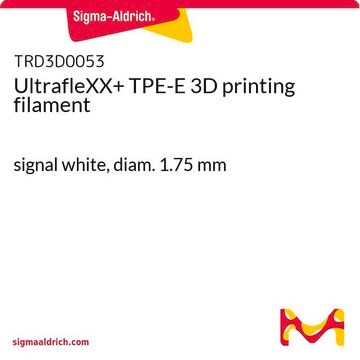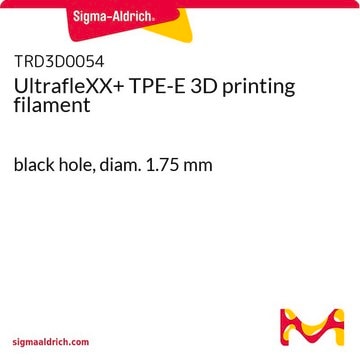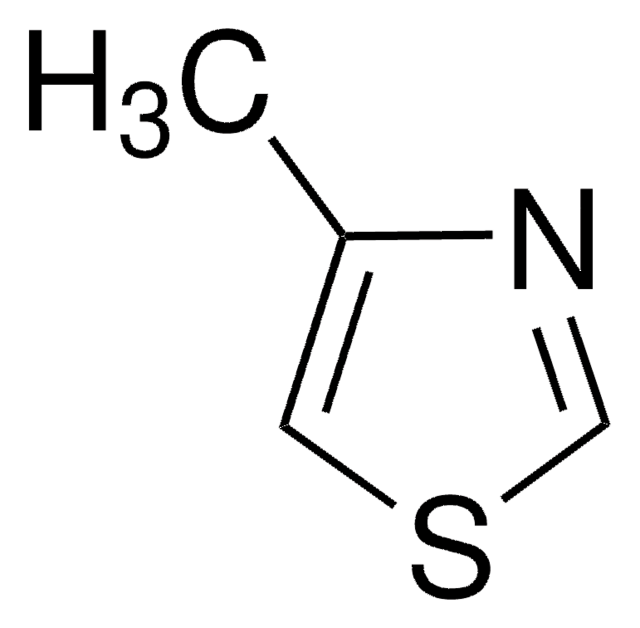W354503
Ethyl-3-hydroxyhexanoat
≥98%, FG
Synonym(e):
3-Hydroxyhexansäureethylester, Ethyl-3-hydroxycaproat
About This Item
Empfohlene Produkte
Biologische Quelle
synthetic
Qualitätsniveau
Qualität
FG
Fragrance grade
Halal
Kosher
Agentur
follows IFRA guidelines
meets purity specifications of JECFA
Einhaltung gesetzlicher Vorschriften
EU Regulation 1223/2009
EU Regulation 1334/2008 & 178/2002
Assay
≥98%
Brechungsindex
n20/D 1.428 (lit.)
bp
90-92 °C/14 mmHg (lit.)
Dichte
0.974 g/mL at 25 °C (lit.)
Anwendung(en)
flavors and fragrances
Dokumentation
see Safety & Documentation for available documents
Nahrungsmittelallergen
no known allergens
Allergener Duftstoff
no known allergens
Organoleptisch
grape; green; citrus; fruity; sweet
SMILES String
CCCC(O)CC(=O)OCC
InChI
1S/C8H16O3/c1-3-5-7(9)6-8(10)11-4-2/h7,9H,3-6H2,1-2H3
InChIKey
LYRIITRHDCNUHV-UHFFFAOYSA-N
Verwandte Kategorien
Allgemeine Beschreibung
Anwendung
- Novel Antiviral Activity of Ethyl 3-Hydroxyhexanoate Against Coxsackievirus B Infection.: Discusses the potential antiviral properties of Ethyl 3-hydroxyhexanoate, positioning it as a candidate for therapeutic use against Coxsackievirus, with implications for pharmaceutical applications and virology (Olasunkanmi et al., 2022).
- RIFM fragrance ingredient safety assessment, ethyl 3-hydroxyhexanoate, CAS Registry Number 2305-25-1.: A comprehensive safety assessment of Ethyl 3-hydroxyhexanoate used in fragrance formulations, emphasizing its toxicological profile and safe usage in consumer products (Api et al., 2020).
Lagerklassenschlüssel
10 - Combustible liquids
WGK
WGK 3
Flammpunkt (°F)
201.2 °F - closed cup
Flammpunkt (°C)
94 °C - closed cup
Persönliche Schutzausrüstung
Eyeshields, Gloves, multi-purpose combination respirator cartridge (US)
Analysenzertifikate (COA)
Suchen Sie nach Analysenzertifikate (COA), indem Sie die Lot-/Chargennummer des Produkts eingeben. Lot- und Chargennummern sind auf dem Produktetikett hinter den Wörtern ‘Lot’ oder ‘Batch’ (Lot oder Charge) zu finden.
Besitzen Sie dieses Produkt bereits?
In der Dokumentenbibliothek finden Sie die Dokumentation zu den Produkten, die Sie kürzlich erworben haben.
Unser Team von Wissenschaftlern verfügt über Erfahrung in allen Forschungsbereichen einschließlich Life Science, Materialwissenschaften, chemischer Synthese, Chromatographie, Analytik und vielen mehr..
Setzen Sie sich mit dem technischen Dienst in Verbindung.








